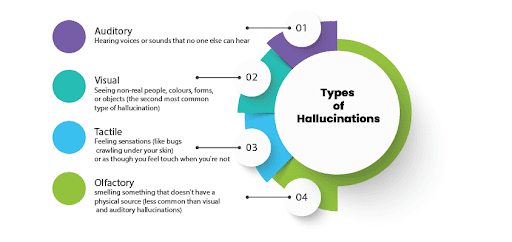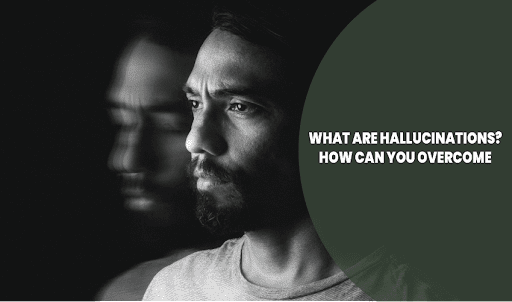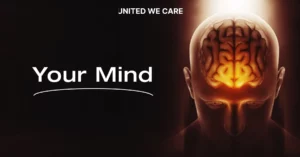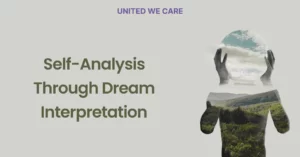Introduction
Most people believe that hallucinations are caused by perceiving objects that do not exist. Hallucinations occur when you develop a foresight of sounds. The complex human mind creates these things. The Psychiatric Dictionary explains that a hallucination is an experience of perceiving objects or events that do not have an external source.
What is a hallucination?
The phrase hallucination originates from the Latin word for “thought wandering.”The experience of objects that do not appear to be factual, such as sights, sounds, or sensations, is called hallucination. The human mind is responsible for these things. Hallucinations are vivid, concrete, and happen in an objective place other than one’s own. A hallucination occurs when a candidate sees, smells, hears, feels, or tastes something that does not exist. Excessive exhaustion and recent suffering might cause hallucinations. Intense negative emotions like stress or sadness, and illnesses like hearing or vision loss, medications, or alcohol, might make people more susceptible to hallucinations. The mental processes that function during hallucinations are thought to involve memories and pictures that the brain struggles to regulate.
Patients suffering from mental illnesses such as schizophrenia and bipolar disorder are more likely to have hallucinations.
Sleep deprivation exhausts your brain, making it incapable of performing its functions. Sleep deprivation has a severe impact on your mental and emotional faculties. It may lead to hallucinations. Hallucinations may occur when the brain’s activity changes. Some people are more susceptible to hallucinations while falling asleep or only slightly awake.

What are the different types of hallucinations?
Hallucinations can take multiple, diverse shapes. Hallucinations or delusional perceptions can occur in any five senses (auditory, visual, olfactory, gustatory, and tactile). If numerous sensory modalities are present, hallucinations can be multimodal. A delusional perception or hallucination is described as multimodal if it contains many sensory modalities.
There are crucial types of hallucinations, including:
- Auditory: Hearing voices or sounds that no one else can hear (the most common hallucination).
- Visual: Seeing non-real people, colours, forms, or objects (the second most common type of hallucination)
- Tactile: Feeling sensations (like bugs crawling under your skin) or as though you feel touch when you’re not
- Olfactory: smelling something that doesn’t have a physical source (less common than visual and auditory hallucinations)
- Gustatory hallucination: Having an unidentified taste on your tongue (the most uncommon type of hallucination)
- Somatic hallucinations can impact the entire body, generating unreal sensations like bugs crawling on the skin.
What are the symptoms of hallucinations?
The following symptoms of hallucinations may develop depending on the type of hallucination:
- Experiencing bodily sensations (such as a crawling feeling on the skin or movement)
- Hearing noises (such as music, footsteps, or banging of doors)
- Positive or bad voices might be heard, such as a voice telling you to hurt yourself or others.
- You might hear positive or negative voices, such as one telling you to hurt yourself or others.
- Viewing objects, people, patterns, or lighting
- Having an unpleasant odour (which can be pleasant or foul and in one or both nostrils)
- The smell of an odour (which can be pleasant or foul and in one or both nostrils)
- The taste of something could be metallic.
- An increased level of alertness
- Elevated mood or depression
- Poor sleep
- Vision impairment (also known as Charles Bonnet Syndrome: visual hallucinations that occur in individuals with progressive visual loss)
- Impaired equilibrium and rhythm
Can you define what auditory hallucinations are?
An auditory hallucination, also known as paracusia, is a hallucination in which a person hears noises but does not hear anything. Auditory-verbal hallucinations are auditory hallucinations in which one or more talking voices appear to the listener. Hearing sounds that have no external source are known as auditory hallucinations. The hearing hallucinations in acute organic states are frequently unstructured sounds—for example, the patient hears whirling noises or rattles, whistles, machinery, or music. Frequently, the sound is unpleasant and terrifying. False impressions of sound are known as auditory hallucinations. Auditory hallucinations cause people to hear several voices. Auditory hallucinations can put a person in a difficult predicament. Patients hear someone they know (a neighbour or a T.V. star) or a fictional figure (God or an angel). Doctors agree that hearing voices indicates mental, neurological, and general medical issues.
What are visual hallucinations?
Visual hallucinations cause people to see things that aren’t there. You could see someone who isn’t there or flashing lights that no one else can see. You could see someone who isn’t there if you see glowing lights that no one else can see. Simple, non-formed visual hallucinations and complicated, formed visual hallucinations are examples of visual hallucinations. Two neurotransmitters, serotonin and acetylcholine, are essential in visual hallucinations. Serotonin and acetylcholine are two neurotransmitters involved in visual hallucinations. Experts find these two neurotransmitters in the visible thalamic nuclei and visual cortex. Visual hallucinations are common in the elderly and associated with ophthalmological and neurological conditions such as dementia and Parkinson’s disease. Whether visual hallucinations arise from a single underlying mechanism or disease-specific factors remains uncertain. Flashes or geometric forms are examples of simple visual hallucinations.
How might a psychologist help you overcome hallucinations?
The goal is to make sufferers less distressed and less impaired in day-to-day life.
- Psychotherapy for hallucinations entails encouraging the patient’s interest in the complexities of their symptoms.
- Psychotherapists educate patients by looking into “possible reasons” for hallucinations and normalising the experience.
- The type of hallucination, the underlying cause, and overall health will influence the treatment.
- Your psychotherapist will most likely propose a multidisciplinary treatment that involves medication, counselling, and social support. C.B.T. (cognitive-behavioural therapy) is still the most commonly used psychological treatment for hallucinations associated with schizophrenia.
Conclusion:
Many people are unaware of how common hallucinations are. They can be concerning but usually signify a brain problem or mental health issue. Ideally, to help you heal quickly, your doctor may need extra time to figure out what’s causing the hallucinations. You may have to modify your behaviour if you don’t get enough sleep or drink too much alcohol. Your doctor will prescribe the appropriate medications to help you avoid repeated hallucinations.





